Polyend Play premieres at Superbooth 22, a new portable sample & MIDI-based groovebox powered by a feature-dense, inspiring sequencer.
The Polish developers of Polyend have been working on a new instrument with a pad matrix for some time. The first leak came shortly after Superbooth 21. More teasers later and recently a leak with the first complete photos. Today, I can confirm that these are true.
The Polyend Play is the latest product from makers of the Tracker groovebox. It’s again a groovebox, but this time with a different concept and workflow.
Superbooth 2022 Polyend Play
In the official press release, the new Poylend Play is advertised as probably one of the most flexible and inspirational groovebox ever created. That’s a daring one considering how many other are on the market. But the Polyend crew has most likely sounded out the market before and during the development.
Polyend Play is a sample and MIDI-based groovebox with a low learning curve and a high fun factor promising the developers. So no pure synth engine. It gives you 8 internal audio tracks and 8 polyphonic MIDI tracks.
The sample engine comes with over 3000 high-quality factory samples that can be recalled from an intuitively designed categorization system. Alternatively, you can import your own samples using a microSD card. Once selected, you can shape the samples using different parameters including sample start/end, sample attack/decay, filter cutoff/resonance, and more.
There is a DJ style filter, and a master FX section with delay, reverb, limiter, and saturation to spice up your entire mix. At first glance a sample engine that you also know from other grooveboxes like the Digitakt for example. Besides the 8 sample tracks, you get 8 polyphonic tracks with flexible MIDI CC assignment per track for the individual knobs and the option of connecting an external controller for MIDI note input. The MIDI out not only outputs the sequence but also chords, arpeggios, program and bank changes, pitch bend, clock, and much more.
Sequencing Extravaganza
The highlight and the heart of the Polyend Play is its advanced, creative sequencer that is bursting with inspiring features.
An 8×20 RGB pad matrix handles the complete operation of the sequencer and sample recording in the steps. It is divided into two distinct grids: one with 8×16 for the sequencer lines and another one with 8×4 for track functions (mute, solo, variation, select) on the right side. There are also 15 touch sense encoders with a double-tap function, 1 push encoder, and buttons that control the sampler and sequencer engine.
Each track (audio/MIDI) can have up to 64 steps, each with different BPM-related speeds, playback modes, and swing values. Yes, you read it right. You can choose for each track from 35 different play modes and make thus each track very independent and unique. Then, you additional chance, action combos, randomizer, and different step repeater functions. So a huge playground for polymetric and polyrhythmic sequences.
The Play sequencer has 16 tracks with 128 patterns, where each track can hold additionally up to 16 variations. This gives you a massive of over 30.000 track variations. That’s a crazy amount. And don’t forget each track can have its own characteristics including its own length, playback mode, etc.
If you are out of ideas, there is a smart fill option that automatically fills any area you choose with an entire beat, a random placement of steps, or even a Euclidean spread. It also offers customizable pattern chaining options allowing you to map entire sequences anywhere on the grid.
Because many like to work fast, the Polyend developers have put a big focus on making it simple and intuitive. For example, it allows you to quickly move data (steps, tracks, track pages…) with simple selection and copy/paste controls.
Further, there is also scale filtering and support for live automation recording. So you can capture parameters in the sequences adding another level of versatility. A perform mode allows you to make non-destructive changes to your tracks, via performance effects. Including tune, filter, overdrive, rearranger, reverb, and many more.
Connectivity
Connection side, you get a stereo output on a 3.5mm jack, a microSD card slot, a MIDI in/out (3.5 mm jack including adapter to 5-pin DIN socket), and a USB-C connection (thanks Polyend), for power (5V/1A). The latter allows you to power the Play with a USB power supply, computer, or in a mobile setup with a classic power bank.
Play features a robust front panel made of anodized aluminum, an HD screen, and comes with high-quality mechanical keys, encoders, and silicone pads. It is very portable with dimensions of 27.5 x 21.25 x 3.75cm and a weight of 1.8kg.
First Impression
I wasn’t lucky enough to get the chance to play with the Polyend Play. You can find below the video of Loopop who already had its review fingers on it. It looks a super fun sequencer. It’s a shame that you can sample inside the unit or re-sample your sounds in the box.
Polyend Play is available now for 799€/$799 USD. The box includes the unit, a USB power supply, a USB-C cable, an audio & MIDI adapter, and a 16GB microSD card packed with high-quality samples.
More information here: Polyend
Available at our partner

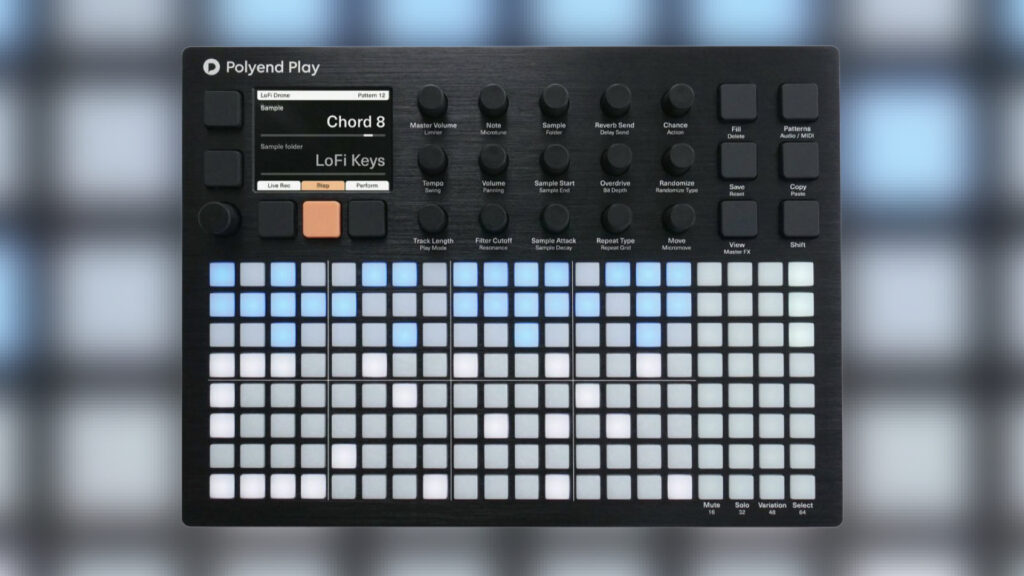
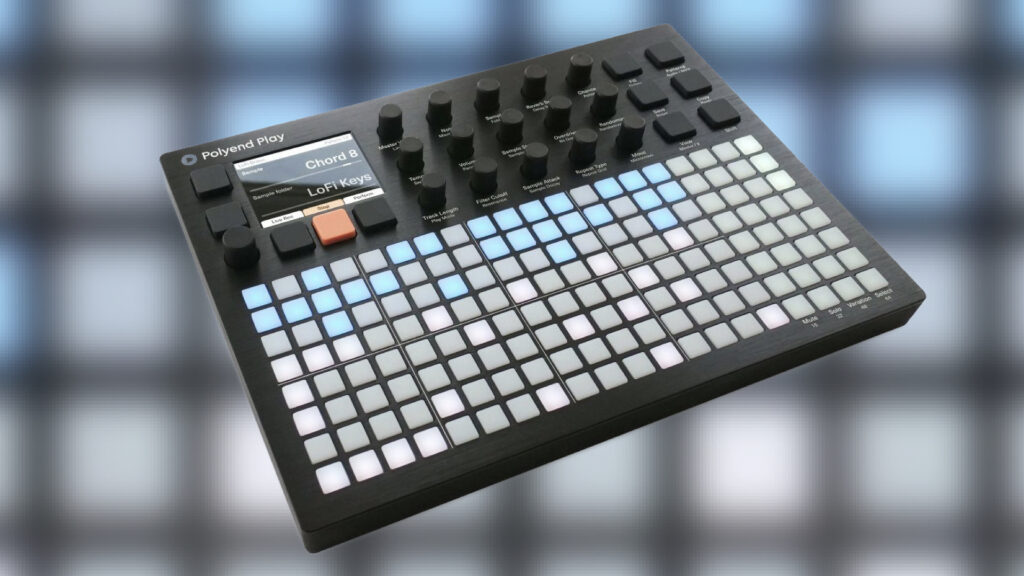

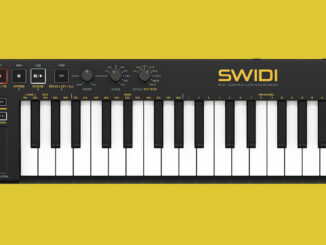
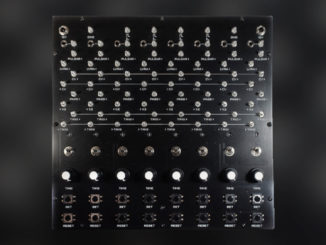
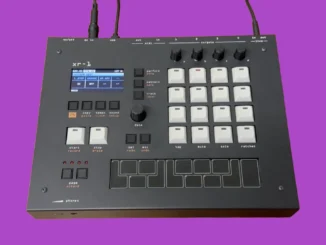
After all the hype, it’s just a fancy Model:Samples?
Lol, how does this make any sense? I guess in that case any sample-based groovebox is just a fancy M:S.
Was really looking forward to a sampler. This is a sample player.
Biggest disappointment of show. No piano roll, no tonnetz, dumbest grid sequencer ever.
Exactly that.
Why the hate when the product scope is right there in the name, PLAY?! For production this isnt exactly what I would use but for performance and fun I’d do it. I like the sequencer and the generative features so for midi controlling ext synths is nice. It’s kind of expensive at $799, with that I’d rather get a Digitakt, a month phone bill and a somewhat nice meal but at $599 I’d seriously consider it.
Agree with this take. I probably won’t swap out my Digitakt for this groovebox. However, I can easily see that with the huge number of knobs & encoders, the price is what it is. Just the raw material cost of this groovebox will be way higher than the Digitakt. I’d say the price is even very reasonable, if you compare it to the Synthstrom Deluge which imo looks like a closer comparison.
Anyway, I like how Polyend is releasing quite some cool machines and interesting features lately, cool company.
You must be on AT&T.
We have some dim commentary here from people who have clearly failed to look at what this machine actually does. It does a hell of a lot. Based on the company’s track record, it will wind up doing a load more, at no further cost.
But it’s easy to complain about new products we don’t know, that we don’t understand, and to proclaim it not what the developer “should have” made, and that – of course – it costs too much, whatever it costs. That the complaints include favorable mentions of another company routinely pelted with crap for no intelligent reason – as though Polyend’s distinctive instrument should be seen primarily as a competitor to this or that Elektron – just adds to the unreal quality of this response.
Why is a certain segment of the synthesizer-using community so reliably whiny about everything new – except maybe for the poor replicas of old instruments from one deplorable Chinese-German bent on filling the seas with bits of broken-down garbage modeled on the famous work of others in the ’70s and ’80s?
No one knows. Worse, no one cares. Better to attack people for making what they want to see in the market without stealing every aspect of some old thing.
What a world.
If anything, this looks like what the Circuit would be if you included everything on the Forum Whiner’s ‘dealbreaker’ missing features list. Like a screen for example. But still they whine.
“will wind up doing a load more”
Love this new tactic taken from the video game industry….paying for a product that isn’t finished at release. Spend money on an unfinished product hoping it will get get the features you want. What a fucking scam.
I love how EVERY Youtube review character discloses receiving a free unit and follows with, “but that has no influence on my review.” but it’s like, Yes it F’n does! if you want to continue receiving free everything you’ll make sure your review sounds fair/unbiased, but there’s not way they don’t lean nice and easy. It’s different for people who save and pay and use only to maybe feel mislead.
Taken on where Synthstrom Deluge left off? Improved with a larger screen and less menu diving? Seem that way at first glance! Sounds like the instrument I was looking for when I discovered the Deluge a couple of years ago! Looking forward to exploring this one more 😊👍